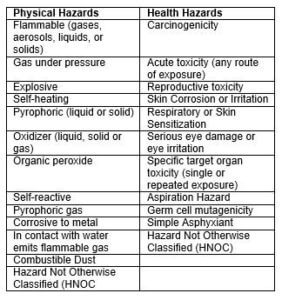Soon suppliers of hazardous chemicals in the United States will be needed to meet the requirements of the EPCRA (Emergency Planning and Community Information Rights Act). These revisions were first published in June 2016 by the US Environmental Protection Agency. EPA has announced a technical change to EPCRA and will enter into force on 1 January 2018.
Background
EPCRA was approved in 1986 due to growing concern about the environmental and safety risks posed by storage and handling of toxic chemicals. These concerns were triggered by the 1984 Bhopal disaster in India, where over 500,000 people were exposed to methyl isocyanate (MIC) through a gas leak. The incident resulted in thousands of deaths and more than half a million non-fatal injuries.
EPCRA’s goal is to help local communities plan chemical emergencies, while the industry is invited to report on the storage, use, and release of hazardous substances at federal, state and local levels.
What has changed and why?
The EPA has made these changes to EPCRA following recent OSHA (Hazard Communication Standard (HCS)) reviews. OSHA has revised the HCS – better known as HazCom 2012 – with the Global Harmonized System (GHS), which includes changes such as the acceptance of specific conditions of the GHS, including Material Safety Data Sheet (MSDS).
OSHA has also updated the HazCom 2012 specific definitions for physical and health hazard classes in accordance with GHS. To achieve this, the EPO revised the hazard categories in 40 CFR Part 370 and replaced the five current hazard categories (fire, sudden pressure release, reagent, immediate (acute) health hazard and delayed health (chronic)) with the 23 categories revised from the revised OSHA HCS were taken over.
These 23 categories are the physical and health hazards of the GHS, as well as four specific OSHA hazards: Asphyxiant Simple, Flammable Dust, Pyrophoric Gas and Hazard Not Otherwise Classified (HNOC).
The complete list of hazard categories is shown in the following table:
The rationale for this measure is to improve consistency between the HazCom 2012 and EPCRA provisions, thereby reducing the burden on the industry as products should only be evaluated against a set of standards. It will also provide additional valuable information to EPCRA issues as the classification criteria are now much more detailed.
When will these changes take effect?
This last rule was published by the EPO on 13 June 2016 and will enter into force on 1 January 2018.
However, these revisions affect the reports under sections 311 and 312 of the EPCRA for this year, as this means that institutions must complete their Level II inventory forms (which must be completed by 1 March 2018) for 2017 calendar Use the new EPCRA risk categories in your report forms.
In our GHS Professional Software, we have introduced new formulations in the SARA Risk Categories (311/312) section to allow users to incorporate these regulatory changes into their UA safety data sheets as needed.
Next Steps
It is essential for companies that supply chemicals or products to the US market to learn about these revisions of EPCRA regulations and observe compliance.
With a dedicated team of regulatory advisors with in-depth knowledge of chemicals regulation around the world, continually monitoring legislation to make sure our software solutions are up to date, and hundreds of software companies help companies comply with chemicals.


